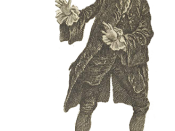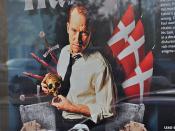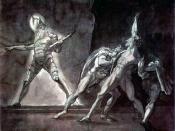A common theme in Shakespeare's plays is that of illusion and reality. It can be seen at work in a variety of ways in Hamlet.
The distinction between illusion and reality would appear to be obvious at first glance, but in fact, as Shakespeare illustrates, it often is not clear at all. What is perceived to be 'real', is often decided by the individual. The word 'real' also includes the idea of truth and, as can be seen in Hamlet, truth is frequently hard to see because a decision can only be made according to knowledge and experience.
The play opens with a night setting and the first discussion we hear is about a ghost between a few soldiers. Immediately we are drawn into the theme - did they really see a ghost?
One way that Shakespeare explores illusion and reality is through the ghost. The ghost is deeply involved with the plot as he is the one that resurfaces events that were meant to never have been revealed, and also triggers Hamlet to avenge his father, which leads him into all kinds of trouble and consequently becomes the backbone of the play.
The ghost is Hamlet's father, and former king of Denmark. The ghost is used to create the mood of the play and makes the audience aware of something strange. In Act 1 Scene 4, to round off the mysterious events Marcellus quotes "There is something rotten in the state of Denmark". This is a very strong remark as it concludes that something is wrong, which works very well with the story as it indicates, although not directly, the eventual collapse of Denmark.
In Shakespearean times, ghosts were still considered a threat. Midnight was often known as the 'witching hour' where all the ghosts and monsters would come...



WOW
Wonderful essay. The ultimate question is was the ghost a reality or an illusion? I loved your insight. Great job.
3 out of 4 people found this comment useful.